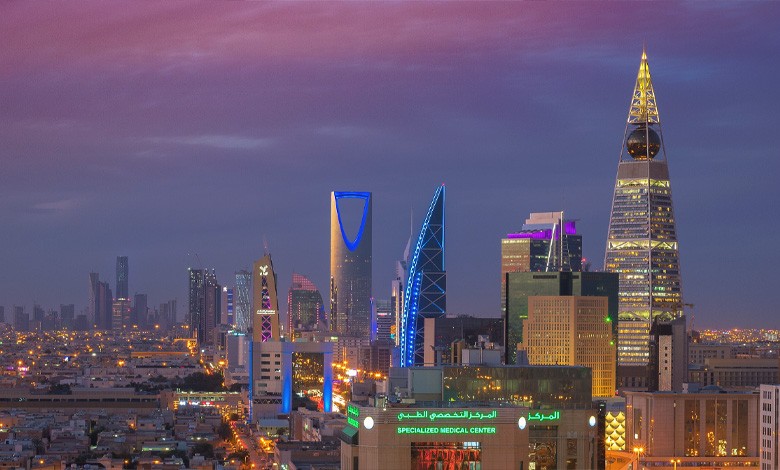“Vision of Saudi Arabia 2030”: why has the Kingdom of SA ceased to be a territory of easy money?

IA “FACT” already wrote that the Kingdom of Saudi Arabia has threatened to sell off G7 bonds if $300 billion of frozen Russian assets go to help Ukraine. The KSA Ministry of Finance later denied these threats.
While the Kingdom’s holdings in euros and French bonds could amount to tens of billions of euros, their sale is unlikely to have a significant impact on market conditions. However, European officials are concerned that a precedent will be set and other countries may follow Saudi Arabia’s lead.
The SA position changed after the G7 countries proposed a solution that does not involve expropriation of assets.
Until recently, Saudi Arabia was the mecca of financiers of all stripes – dealers, bankers, investors. If earlier the state investment fund of Saudi Arabia – in 2023, according to some estimates, it reached an indicator of 925 billion dollars – actively invested in various projects around the world, today the fund has reconsidered its priorities, shifting the emphasis to domestic loans. The country has ceased to be a territory of easy money.
Bankers note that companies are not chasing Saudi money as much as they used to. What is happening in the country of two sanctuaries, which makes it increasingly difficult for investors to disgorge this golden antelope?
Riyadh has set itself the goal of reaching 100 billion dollars a year in direct foreign investment by 2030. A law has recently been passed to promote foreign investment and has led to changes in policy regarding this investment.
Riyadh considers investments justified if they are invested in the local economy. Officials set many conditions for investors: hire local employees, invest in local companies. Thus, an American investment company, having received 5 billion dollars of investment, organized an investment fund to support the economy of Saudi Arabia. That is, the main emphasis is on the development of capital markets in the kingdom.
The driving force behind the transformation was Crown Prince Mohammed bin Salman al-Saud, who took charge of the sovereign wealth fund in 2015 and tasked him with competently managing Riyadh’s trillion-dollar plans, diversifying the economy and bringing it to the world stage.
Seeking to very quickly grow its investments from almost zero to a target of 24% of the portfolio, the Fund entered into a series of high-profile commercial deals. In particular, he invested 45 billion dollars in the Vision Fund – the world’s largest technology-oriented venture capital fund with a capital of more than 100 billion dollars. The company invests in robotics, artificial intelligence, telecommunications, e-commerce, etc. Vision Fund is part of SoftBank Group Corp. – a Japanese multinational investment management holding company with significant investments in technology companies around the world.
The Kingdom’s sovereign wealth fund also invested $20 billion in the infrastructure of Blackstone, one of the largest investment companies in the world, specializing in asset management, including real estate, private equity, lending and infrastructure.
Recently, the fund has invested in companies in the automotive industry, mining industry, cruise companies, etc. And, in addition, poured tens of billions of dollars into the American and European stock markets. And also $2 billion in a private investment fund created by Donald Trump’s son-in-law Jared Kushner.
The turbulent investment activity of the Saudis coincided with a drop in liquidity in world markets due to inflation and an increase in discount rates. The situation became more complicated after the full-scale Russian invasion of Ukraine. And Saudi Arabia received a surplus budget for the first time in its history in 2022. Riyadh has decided to reduce oil production to balance and maintain high prices on the world black gold market.
After that, the state budget of the “golden antelope” naturally swung towards a deficit and the country faced the problem of fulfilling its financial obligations to investors. According to the estimates of the US Securities and Exchange Commission, the capitalization of the fund fell from 35 to 20 billion US dollars in the process of its transformation.
The fund sold part of ballast assets. Now the Saudi government officials are determined to be more restrained in investments. Foreign investors note that the Kingdom is refocusing on domestic consumption and the development of domestic infrastructure.
So, the Saudis intend to actively invest – 40 billion dollars per year – in the NEOM project – Saudi Arabia’s ambitious plan to create a city of the future in the northwest of the country, in the province of Tabuk.
Just imagine this fantastic city that is planned to be built in a straight line over 100 miles long in the desert. Glow-in-the-dark beaches, an artificial moon, a car-free city, levitating trains, a vast expanse of green in a desert-dominated country.
The city is planned to house around 10 million people on an area of 26,500 km², roughly the size of Belgium. The city will be fully powered by renewable energy.
NEOM will be a center for advanced technologies, including artificial intelligence, robotics and other innovative solutions. The project envisages the preservation of most of the natural landscape. By design, each region will have its own unique specialization, from industrial zones to tourist resorts. The city of the future promises to become an important center for innovation, entrepreneurship and sustainable development.
This $500 billion project is part of the Saudi Vision 2030 national strategy aimed at diversifying the economy and reducing the country’s dependence on oil. Among other projects of the future, in which the Saudis are enthusiastically ready to invest in order to turn their blessed land into a paradise corner of the planet, there are the following.
The Red Sea project, which involves the development of luxury tourism on the sea coast, including the creation of new tourist attractions. Qiddiya is an entertainment mega-project that includes theme parks, sports facilities and cultural centers. Al-Ula is a historical and cultural project aimed at the preservation and development of archaeological monuments.
Also part of the NEOM project should be The Line – a futuristic city without roads and cars that uses only renewable energy, and Diriya Gate – a project to restore the historical district of Diriya with museums, hotels and cultural facilities.
These projects are part of a broader strategy that also includes the development of infrastructure, health care, education and increasing the share of women in the labor market.
Tatyana Morarash





